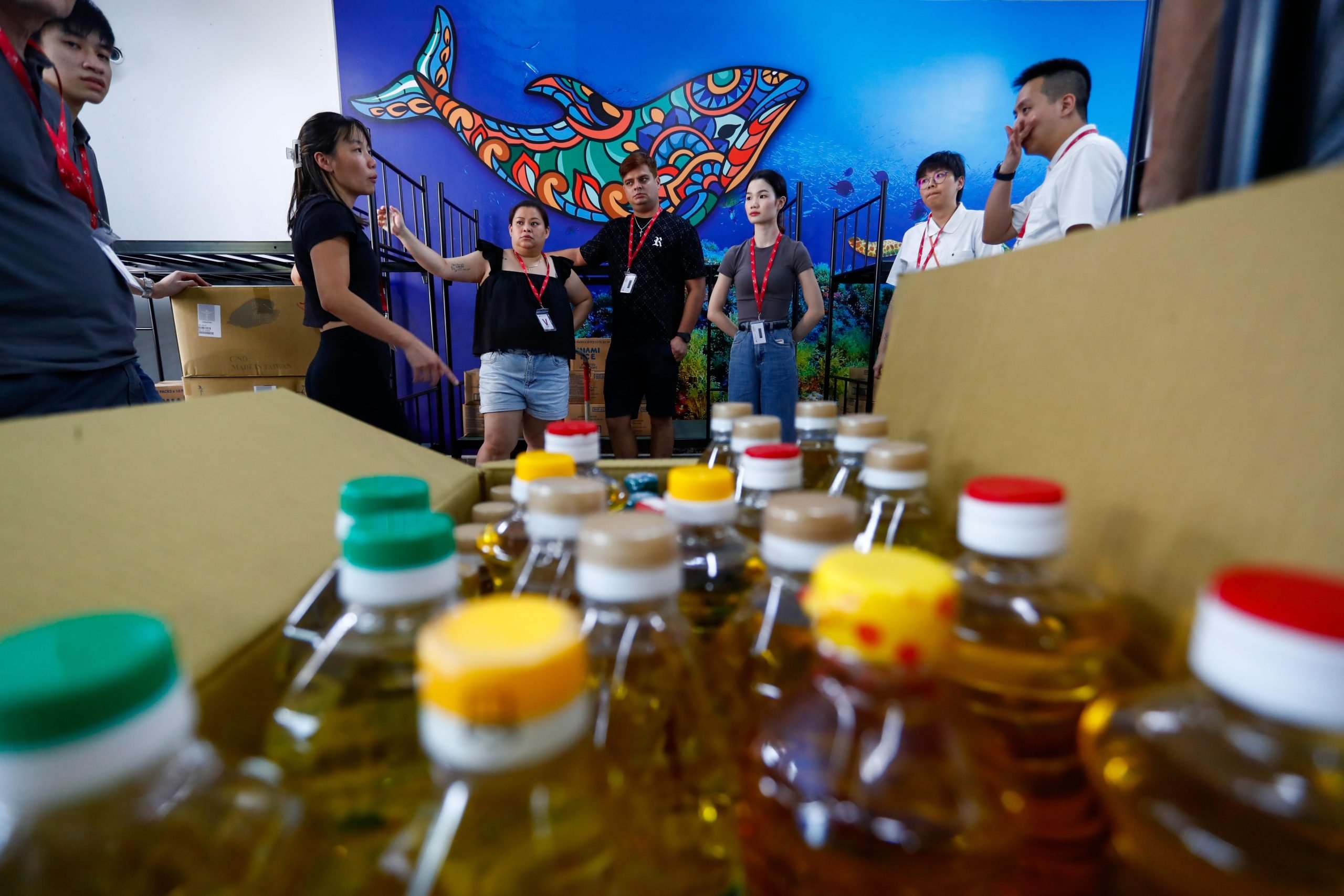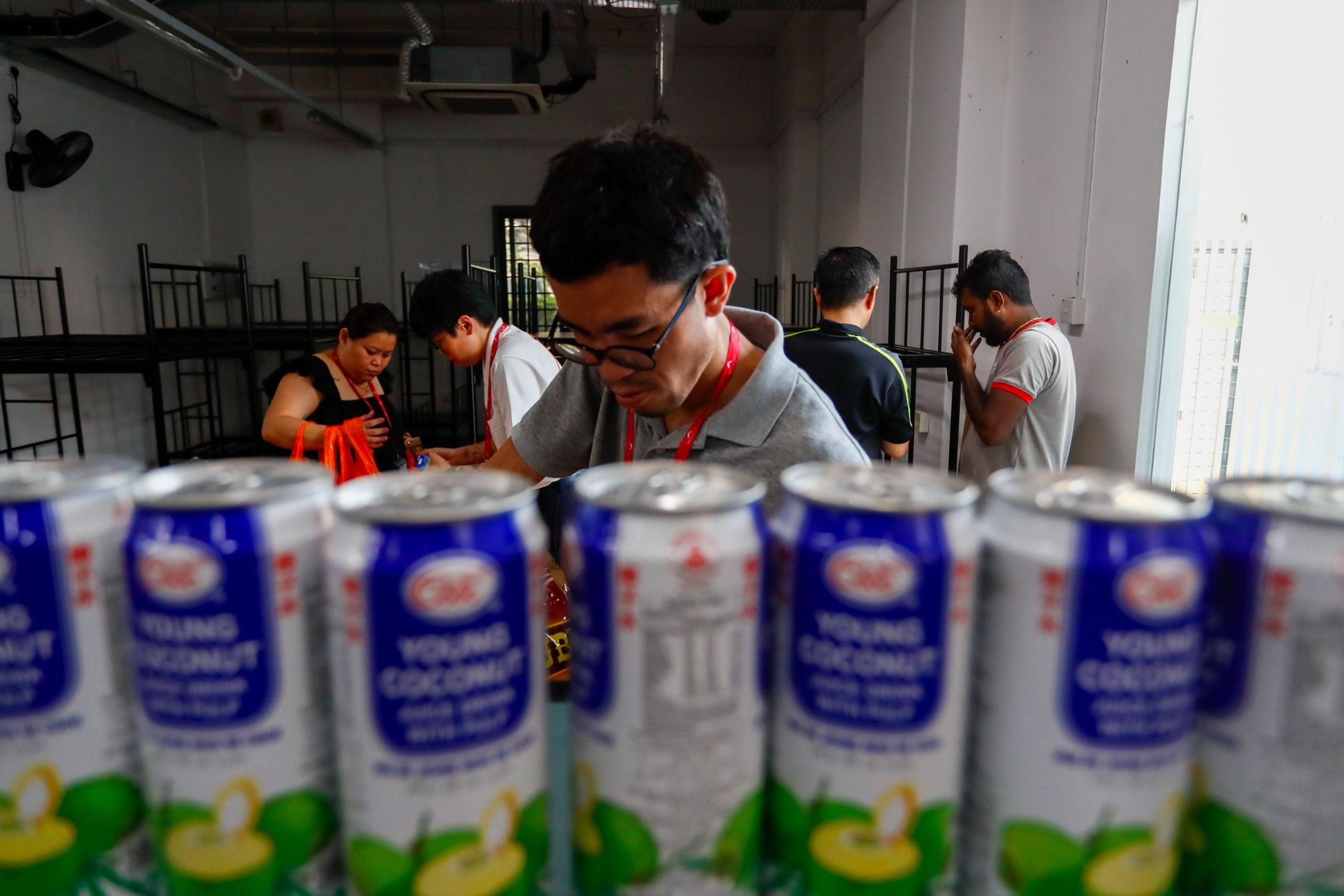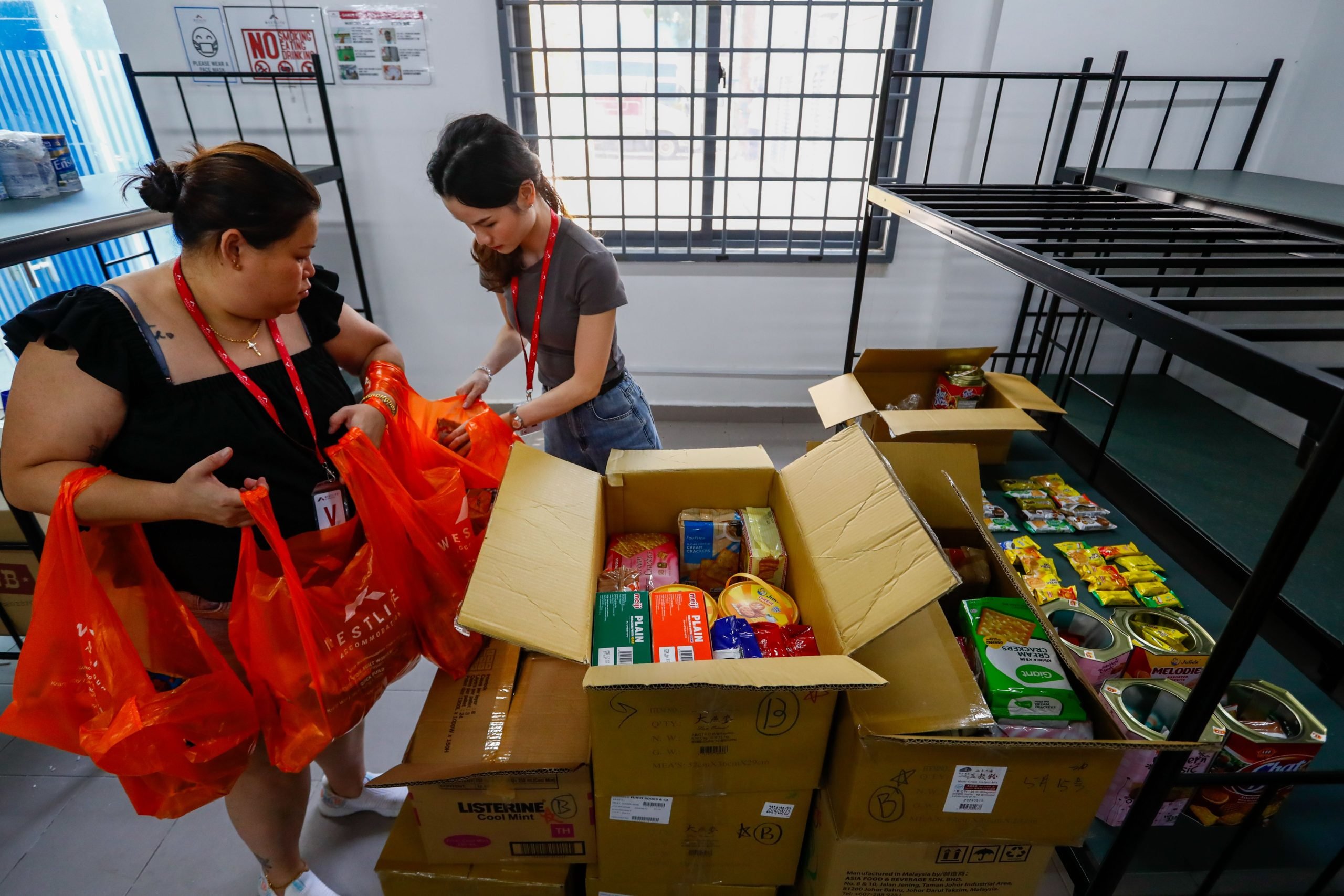
Shrouded in shadows are the Indian and Bangladeshi residents using outdated mobile phones that one could barely discern even by their silhouettes.
As the volunteers from the Humanistic Youth Center venture into this unknown realm — encased within layers of grey metallic barricades, facial recognition gates, and personnel donned in black uniforms — they are met with gazes from those long forgotten in an island nation that is known for its cultural diversity.
The Westlite Dormitory plays host to labour-intensive workers primarily hailing from India and Bangladesh, with a smattering of others from China.
Nestled in an industrialised district along the Johor Strait, demarcating Singapore from Malaysia, the dormitory is surrounded by vast wastelands, construction sites, railway lines, and a train depot, devoid of the entertainment and hawker centres frequented by Singaporeans.
Yet, what distinguishes this place is the presence of restaurants within the residence, where the scents of spices and herbs, used by chefs to prepare affordable yet authentic Indian dishes, perpetually waft through the air.
When people gather for food or simply sit on the floor for chats or respite, they converse in Hindi, Bengali, or a blend of English, symbolising inclusiveness and camaraderie in this crowded microcosm within a small nation.
While the two South Asian countries have supplied a substantial workforce to drive Singapore’s progress, the dormitory’s location and the prevailing sense of isolation serve as a perpetual reminder that these groups often go unrecognised for their contributions in making Singapore prosper.
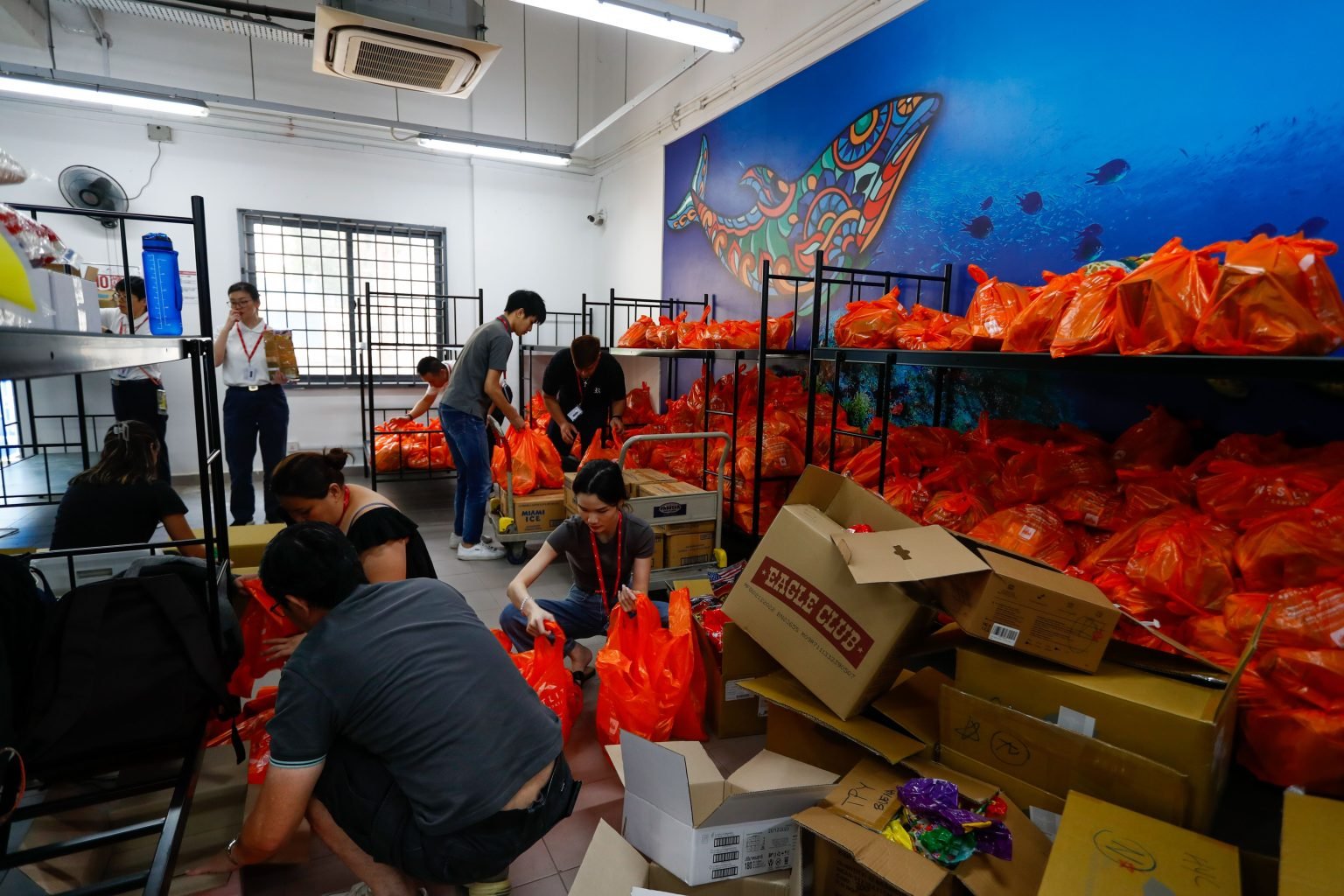
Inside a room housing dozens of double-decker beds, where windows are heavily barred and droplets are bouncing off the ceiling, the volunteers feel the constraints of high-density co-living, the scarcity of privacy palpable, as they work tirelessly to pack resources into bags, which are to be distributed on Deepavali in November.
These bags contain heaps of provisions, necessities, and infant formula, acquired through donations. The aim is to bridge the longstanding gaps between these residents and the locals, fostering a “mutual understanding” of the cultural disparities and ways of life.
For these first-time volunteers, the process takes about 120 minutes, a fleeting glimpse into the lives of up to 6,000 residents at Westlite.
However, for the Bangladeshi and Indian workers, confinement within this facility spans months, if not years, at the cost of personal space and dignity. This isolation alienates them from the very nation they contribute to, whether by laying underground cables, maintaining bus stops, or constructing overpasses that expedite the daily commute.
Yet, within these walls, they find a sense of “unity, community, and interpersonal bonds” formed while being thousands of miles away from their homes — according to Choon Choon, the centre manager of Tzu Chi Humanistic Youth Centre who has aided these workers during the Covid-19 pandemic.
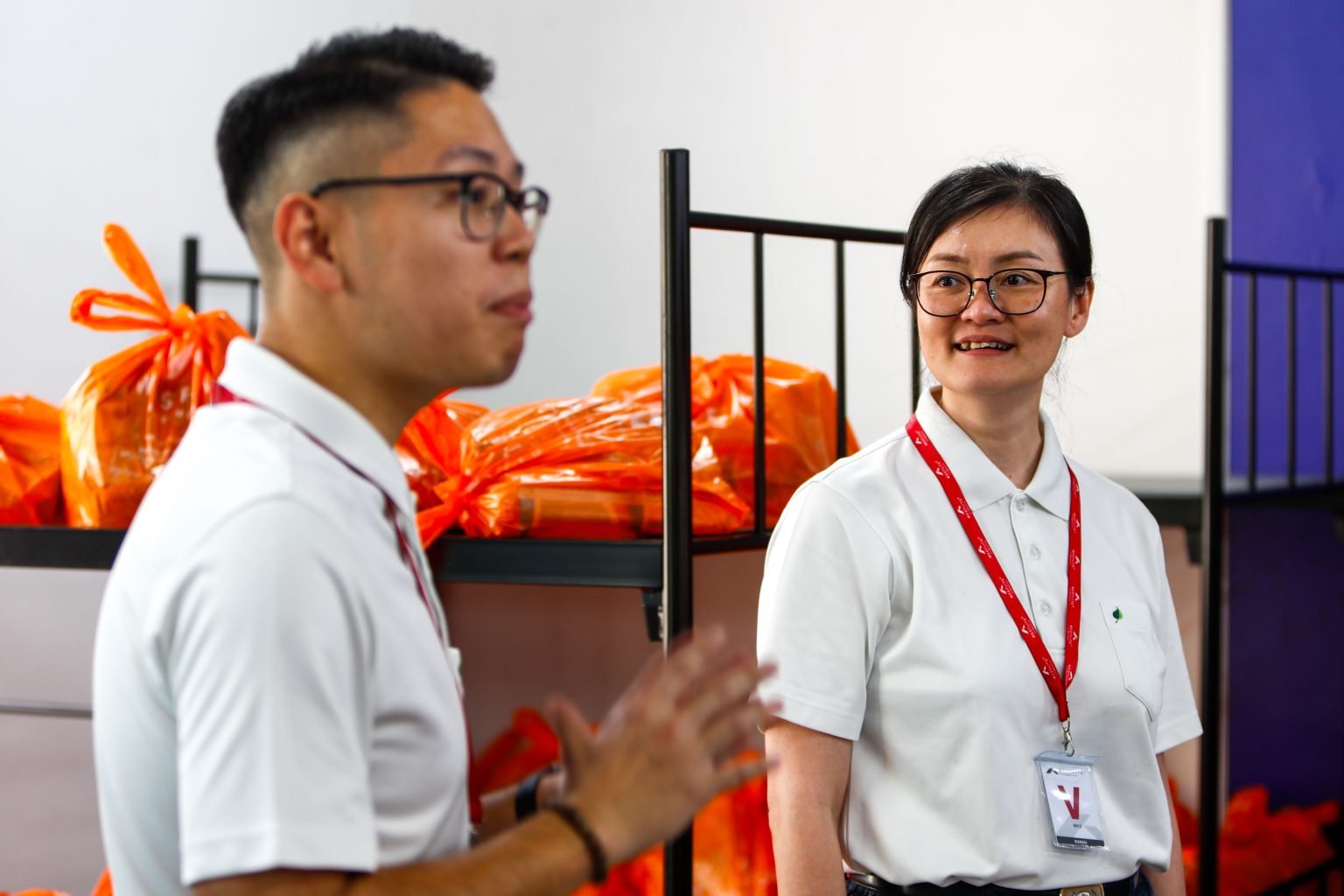
by Daniel Ceng | 29.10.2023




